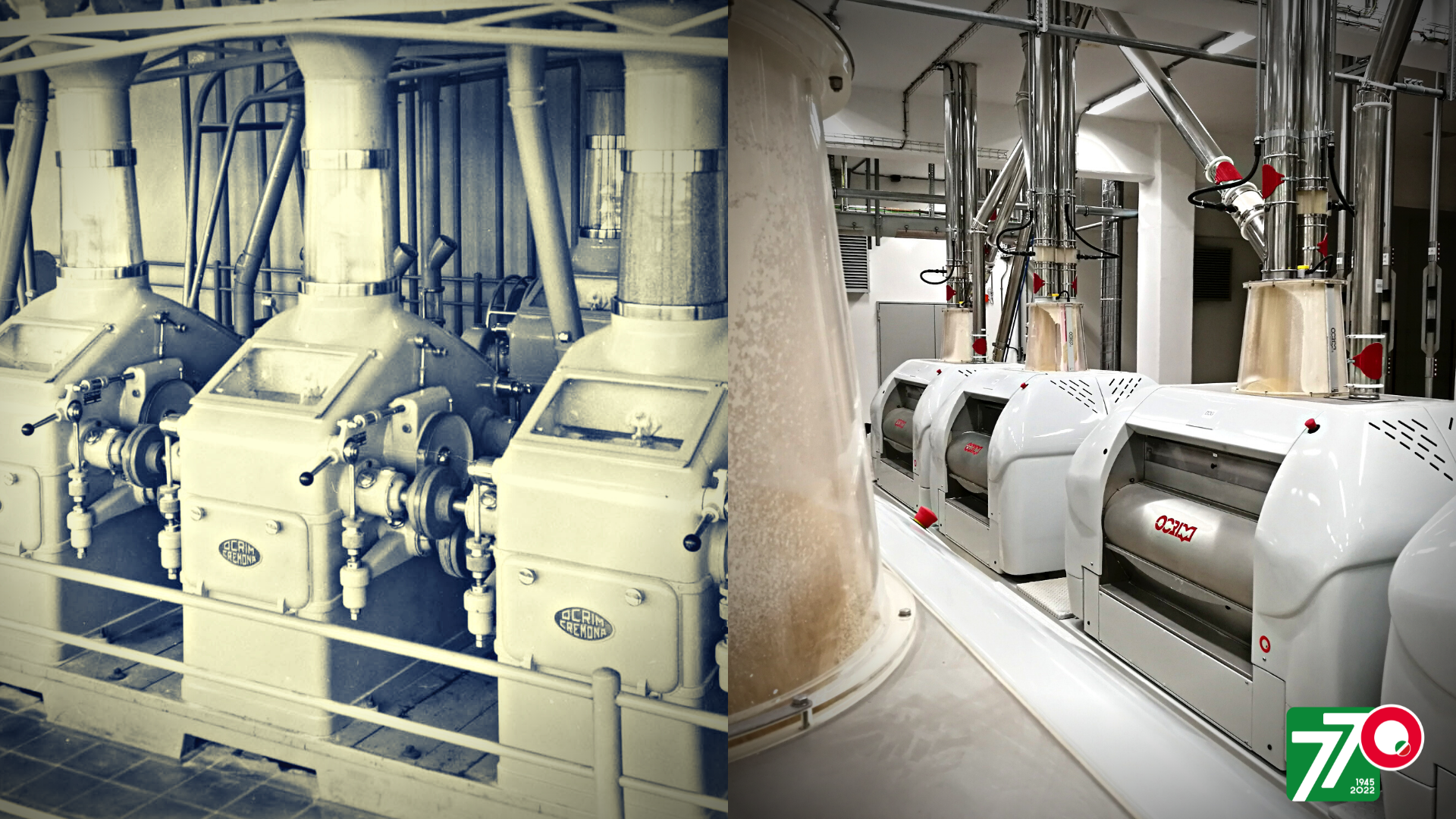Today we want to tell you about the technological evolution of Ocrim rollermills and how our R&D division has made these machines increasingly efficient and reliable to guarantee excellent products with the highest food safety criteria.
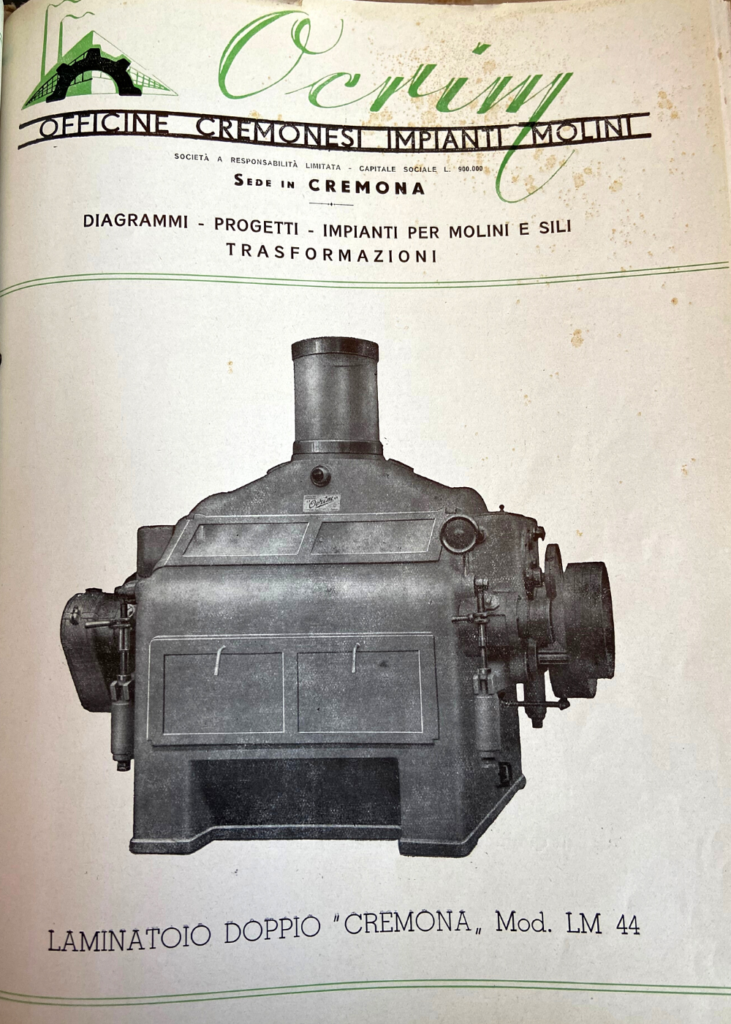
We have been taking care of our customers for 77 years by listening to and evaluating together those processing needs that allow us to obtain products in line with market demands. Each customer is a world unto itself, so our tailor-made design policy has always proved to be a successful choice, rewarding us with the satisfaction and awareness of having done a good job. Over time we have focused on improving the technology of all the machines more and more and, specifically, of rollermills because they are the “heart” of the milling plant, and the quality of the finished product largely depends on them.
Until the 1960s we produced the LM rollermill model, known all over the world, whose main body was a one-piece cast iron frame, cast in our workshops. It was a double diagonal rollermill, characterized by an extreme solidity of the mechanical complex and a perfect finish of the moving parts to obtain silence and minimum energy consumption. Even then we paid great attention to the issue of consumption. Even then we paid great attention to the consumption issue. Alongside the LM model there were also the LMM and LP one-piece double diagonal rollermills, the latter designed and built for the “Superior” mills and for milling plants arranged on only two floors where the lack of height required the installation of rather low machines.
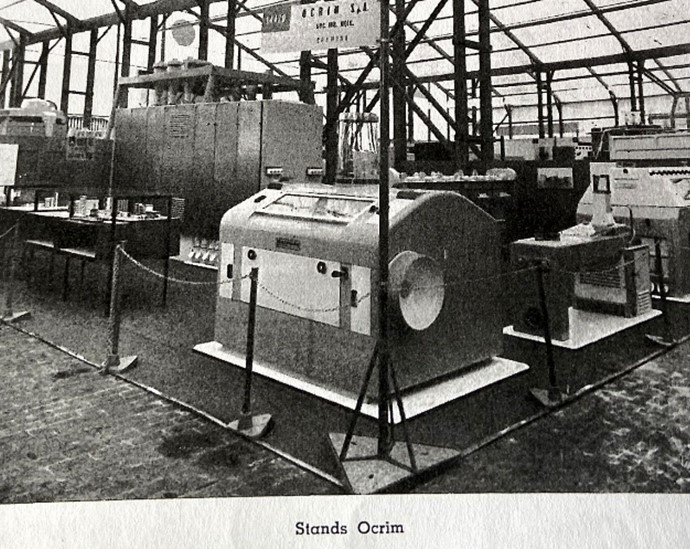
In 1961 we presented a preview of the LK model at the Milan exhibition, again with diagonal rolls, which was much appreciated for its versatility, silence (those who entered the rollermill floor at the time immediately noticed the reduced noise level) and for the internal housing of all the movements. The only external lever was used to disengage the rolls in case of emergency. Another important innovation was given by a fixed support mounted on an eccentric bushing which, with a single 180° rotation, allowed without any modification to vary the center distance of the rolls according to the pre-selected diameter without changing the position of the sealing line between the rolls and the feed rolls. Before the LK model, the torque of the fixed supports had to be changed according to the diameter of the rolls chosen by the technology.
In 1985 we designed the first horizontal rollermill, the LAM with gear transmission, whose construction technique offered a series of further advantages. Its mechanical architecture represented a real challenge for those years but, despite this, it was appreciated for its high level of automation and for its extreme sturdiness and non-deformability. With its 39.5 quintals of weight, it guaranteed maximum stability at high speeds, even in the most severe operating conditions.
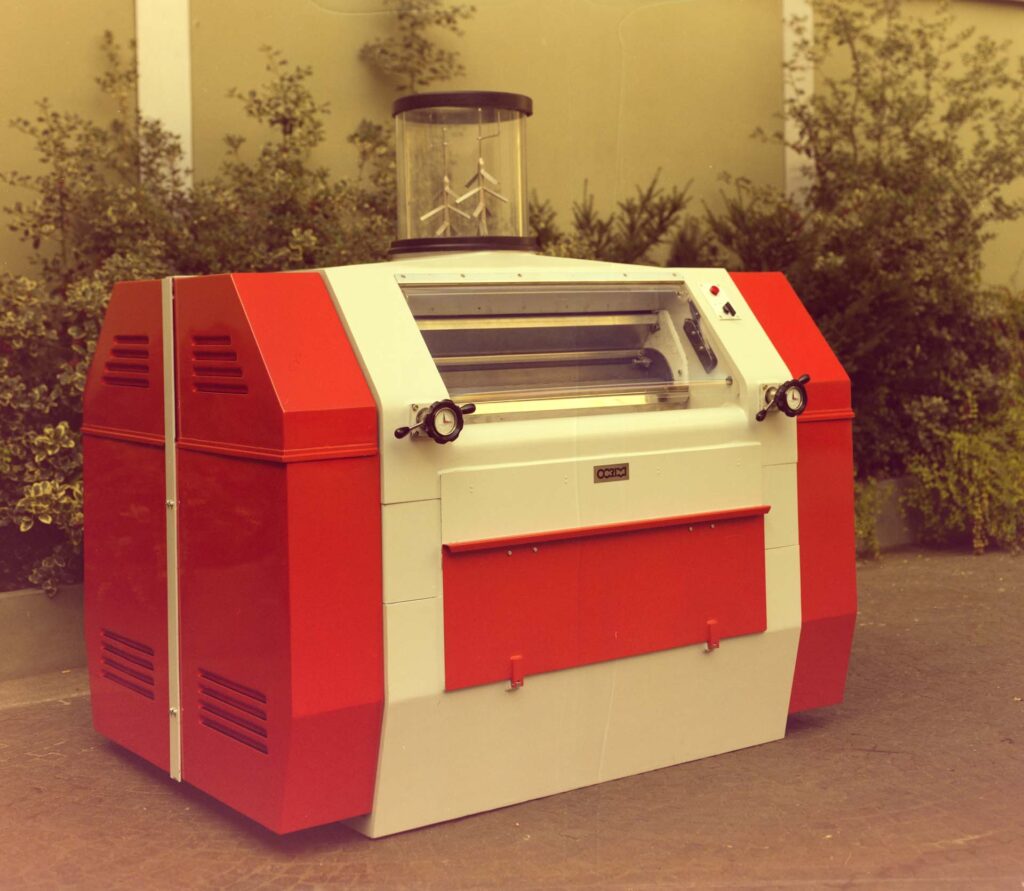
In the following years we threw on the market three further variants of the LAM model: LAM C with belt drive system, LAM CV with belt transmission and automatic feed speed adjustment, LAM CA with belt transmission and automatic engage/disengage. The LAM family expanded in 1990 when, in Orlando (USA), we presented the LAM CVA rollermill with two interesting innovations: the belt transmission equipped with a special profile (patented by OCRIM in 1989) and the totally automatic feed system. We designed that belt to optimize the differential speed of the grinding rolls but, in addition to this it also offered the advantage of not needing lubrication, being maintenance free and reducing roll replacement times. While the automatic feed system allowed the pneumatically operated variation valve to be controlled by the device located in the feed chamber. From that moment on, thanks to Ocrim, the belt drive became the must have for all mill builders.
The next evolutionary step of this model dates to 1998 with the LAM CS. It differed from the previous versions for the presence of a completely innovative and patented feed system, electronically controlled through a micro-PLC, replacing the pneumatic system. The introduction of a PLC control logic made it possible to achieve a high degree of safety for the management in sequence of the operations required of the machine and, in case of a malfunction, provided a useful and detailed diagnostic relating to the electronic and pneumatic components of the single passage.
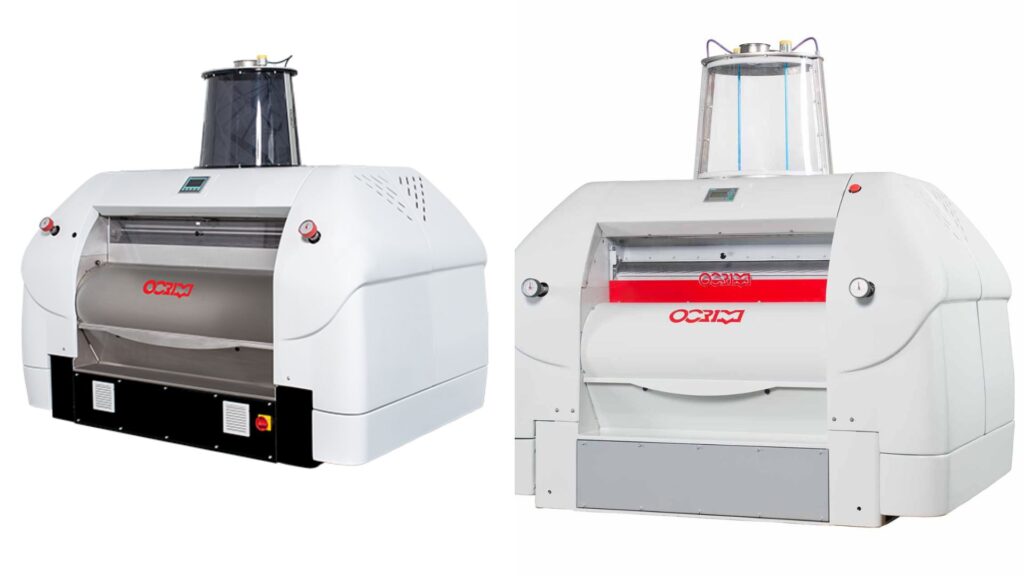
In 2000 we faced the challenges of the third millennium by dedicating ourselves to a theme that in the following years would become discriminating in terms of quality: food safety. We built the RMX rollermill mainly using stainless steel to facilitate cleaning of the machine, but above all to make the grain resistant to mold and bacteria. The technology was always the widely tested one of the LAM models, integrated with a series of innovations that would change the way production was managed. The new automation concept had a sophisticated electronic control capable of communicating with the central control system and became a fundamental requirement also for “lights out” plant management. The attention to sanitation which has inspired the whole project, determined the choice of the touch screen control panel and was the first in the world to use this control technology. The technological aspects are also noteworthy to guarantee the best machine on the market. In fact, thanks to its design, this machine revolutionized the milling world.
Currently on the market there are two versions that stand out for their innovative design and on which we have dedicated particular attention to offer you machines at the highest levels in terms of simplicity, reliability, competitiveness and Italian spirit. We are talking about the latest version of the RMX model, where steel replaces cast iron in the basement, the internal systems are constantly evolving such as, for example, the adjustment of the distance between the rolls which is now fully automatic. Another model available is the RMI rollermill which differs substantially from the RMX in the painted steel structure and in the feeding group, an independent extractable module equipped with direct drive gearmotor on the feeding roll driven by an on-board inverter.



